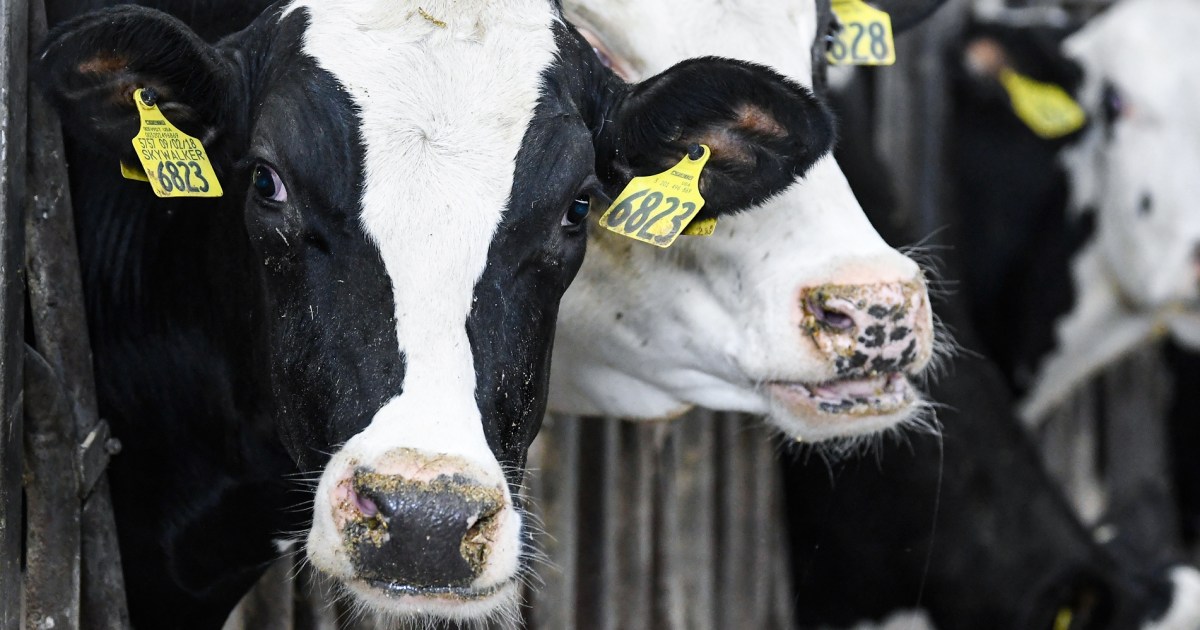When virologists were asked before the covid what was the pathogen with the most ballots to cause the next pandemic, many responded that avian influenza, A(H5N1).
Faced with the same question today, the answer is repeated.
And with more reasons than then, although it should be clarified that most of the viruses that are suspected of causing a pandemic —which is always in humans— do not.
And that the last one was the fault of an unknown person until 2019: SARS-CoV-2.
A(H5N1) has been on the radar of health authorities around the world since the mid-1990s, when it was first detected.
But in recent months alarm bells have been sounded that have not been heard before: although the virus had frequently jumped from birds to mammals, it was not transmitted significantly between them, as the latest research suggests.
Could it mutate and develop the ability to infect humans?
The answer from the experts is “yes, it could”.
And the more contact people have with the virus, the more likely it is to happen, although today it is not easy: it would require the concatenation of a series of unfortunate events that are considered unlikely.
At least in the short term.
The World Health Organization has described the risk to humans as "low", precisely because there are no infections, but it has also recalled that we must be prepared "for any change in the status quo
"
.
There are still unanswered questions, but this is what is known about A(H5N1):
What is A(H5N1)?
It is an RNA virus (like the covid virus) that was detected in 1996 in southern China and that proliferates mainly in waterfowl, which often carry it without pathogenicity.
It became endemic in Asia, but in Europe and North America it used to only be detected in autumn and winter, with the migration of these birds, to practically disappear in summer, as happens with the human flu.
Since 2021, however, it has been broadcast throughout the year and has recently also reached South America, where it was very rare.
Can it be transmitted between humans?
Jumps from the virus to humans are not frequent, but neither are they extraordinary.
Since 2021, a dozen have been registered and since their discovery, less than 900. In humans it is very serious, with fatality rates of more than 50%.
What has not been documented so far is any transmission from one person to another.
The virus, today, does not have the capacity to do so, but the great fear is that it will develop it based on mutations.
Why is it considered dangerous?
The virus has been troubling veterinarians for decades: in non-endemic places, the method to stop its proliferation in poultry is to slaughter it on farms where it is detected.
In the last year, the United States alone estimates that 58 million birds have died from bird flu.
Virologists have always viewed it as a possible but unlikely threat to humans.
There are several reasons that lead many experts to consider it a danger: since 2021 it has proliferated more among non-aquatic birds, such as scavengers.
This has produced more contact with mammals (which are the food of these species).
And, above all, for the first time, possible infections between mammals are being detected: at the end of last year it was discovered in a Spanish mink farm and, recently, everything indicates that the same thing has happened between sea lions on the beaches of Peru .
This, on the one hand, makes it more likely that the same thing happens between humans.
On the other, it brings the virus closer to people with intermediate hosts who usually have more contact with them than birds, so that they make the jump more likely.
What is the probability of a mutation that makes it transmissible between humans?
What is known is that the more the virus circulates and among more species, the more likely it will develop a mutation that makes it transmissible between humans.
“I don't see it as something imminent that could happen tomorrow.
But it's like a lottery for which we are buying more and more tickets,” says Albert Perlas, a researcher at the Pioneer Campus in Munich who has been studying bird flu for years.
One of the great fears is that a farmed mammal, such as a pig or a mink, could simultaneously host the A(H5N1) and the human influenza virus, and they would recombine with the worst of both: the virulence of the first and the transmission capacity of the second.
Why is it not considered an imminent threat?
Perlas explains that there are several “barriers” that protect us: “The receptors that interact with the avian virus are not easily found in humans, preventing its replication.
In addition, these viruses take advantage of avian proteins to proliferate, proteins that are not found in mammals.
Finally, even when these barriers are overcome, it has recently been seen that the virus replicates segregatedly in the different lung lobes, isolating the variants that, by chance, could be more adapted to the new species and limiting their transmission.
This could explain that they can infect humans, but not that they can be transmitted between them."
What can be done to avoid a pandemic?
Elisa Pérez-Ramírez, a veterinary virologist at the CSIC's Animal Health Research Center (CISA), assures that work is already underway on veterinary surveillance, both in the wild reservoir and on farms.
“Avian influenza surveillance in Spain is very good, but it must be extended to cover the whole year, and not only in autumn and winter, as up to now.
In addition, passive surveillance must be increased: examining dead animals, both birds and mammals, which were not paid much attention until now”.
Perlas adds that it is important to prevent large farms from concentrating in the same areas, which facilitates the spread of the virus: "It is something that is not seen as much in Spain, but it is in other countries, such as the Netherlands."
In these centers, the experts add, preventive measures should be strengthened in the workers.
One of the measures that they propose is that they get vaccinated against seasonal flu to avoid as far as possible mutations due to combination with the avian virus.
Are there vaccines against A(H5N1)?
Yes, they exist for birds and, experimentally, for humans.
In birds they are frequently used in Asia, but in Europe they are prohibited.
Aitor Nogales González, a CISA researcher, says that there is a great debate on this matter in the EU.
It is something that is viewed with suspicion, among other things, because it prevents the export of meat from vaccinated animals.
“The vaccine protects animals from severe disease, but it does not prevent the virus from circulating and mutating.
Probably, it would have to be implemented at very specific times and areas, together with very rigorous serological tests before and after vaccination to find out if the virus continues to be transmitted, ”he points out.
In humans, Nogales continues, they are emergency authorization vaccines that could be applied in the event of infections.
How will the virus evolve?
If global health experts have learned anything during the covid pandemic, it is to greatly limit their predictions.
“Until now, it has broken the mold,” says Pérez-Ramírez.
“It seems that it is going to become endemic in Europe and other places where it was not, at least in wild species.
It is possible that it develops immunity in the birds and that the impact between them is less, but it is not really known.
Subscribe to continue reading
Read without limits
Keep reading
I'm already a subscriber

/cloudfront-eu-central-1.images.arcpublishing.com/prisa/QTUMKG7RQZDZVFWYBU2QBUMMRE.jpg)

/cloudfront-eu-central-1.images.arcpublishing.com/prisa/GLQIPWOC3VBT3BKZRNAZOQJEQU.jpg)





